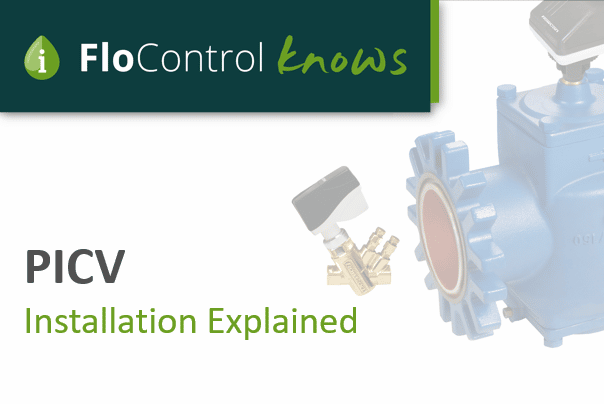
How do PICVs work? Q&A: Know all about PICVs
10 July
Since 2010, FloControl have exclusively supplied the innovative FlowCon threaded and flanged PICV valve ranges in the UK.
In the beginning constant flow systems were still common in British commercial and industrial buildings, using static or proportional balancing valves in combination with 3 & 4 port control valves. New legislation for the conservation of fuel and power, which was calling for a reduction in CO2 emissions drove the introduction of variable flow systems, which has changed the hydronic system balancing requirements.
The application of PICVs became an integral part of the hydronic system balancing strategy. FloControl has been deeply involved in the UK hydronic system evolution, resulting in extensive knowledge of UK-specific design and applications as well as practical aspects of PICV installation and commissioning of variable flow systems.
Over the years we have been asked and have answered numerous questions how PICVs work in variable flow systems. Today we would like to share 10 of these frequently asked questions and our answers, which we hope you will find useful.
Can flow be measured through the PICV?
The only way to get accurate flow measurement is to use an independent flow measure device such as metering station. A flow reading can be obtained through the PICV using the kv value and an electronic flow computer. This will not be as accurate as a flow rate measured on a metering station.
What is the purpose of the two pressure/temperature plugs on the PICV?
They are used to measure the differential pressure across the valve to ensure it is in excess of the minimum required for it to operate as a pressure independent control valve.
How is a 2-Port PICV different to a 2-Port control valve?
A PICV combines 3 valve functions in one housing: 1. Automatic balancing, 2. Differential pressure control, 3. Full stroke modulating control, whereas a 2-Port control valve only has 1 function, to shut off water flow or to control and regulate flow through a pipe.
Is a commissioning valve needed together with a PICV valve to balance the flow rate?
In a variable flow system with PICVs a commissioning valve is not required as the PICV valve will automatically balance the flow rate.
Does a PICV installation require an actuator?
One of the PICV valve functions is a control valve. For a control valve to work an actuator is required, which can be either thermic or electric on/off raise/lower or modulating.
Can a PICV provide a feedback signal?
A PICV doesn’t provide a feedback signal. This feature can be included in the actuator, if specified.
Can the PICV be failsafe?
If specified, it can be supplied “failsafe”. It requires an actuator with an integral battery pack to store sufficient energy to perform the failsafe function.
Are PICVs suitable for Ultra Low Flow applications?
PICVs are suitable for Ultra Low Flow applications, provided they are carefully selected. It is crucial to select a PICV that can be set to an Ultra Low Flow without sacrificing valve control, i.e. the max flow rate setting and valve control settings are 2 separate settings.
Are PICVs subject to blockage?
In low flow systems this has the potential to be an issue as the control area required is small and could be blocked by debris in the system. It is important to have the facility to maintain the PICV installation effectively without having to remove the valve from the system. It is recommended to select a PICV valve with an easily removable insert to achieve this.
How do you size and select a PICV?
Unlike traditional control valves, there is no need for complicated sizing calculations. A PICV valve has an authority of one at all times therefore they can be sized and selected purely on the required design flow rate.
Do you have a different question?
Contact our engineers – we are here to help!
Download
